Teaching by Handling
Textbook about Functional Integration - FI,
Non-Verbal Handling
A timid person can not learn
Index of contents
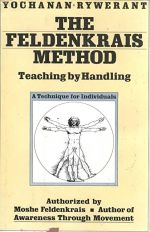
| § | Theme |
|---|---|
1 | The book |
2 A | Moshe Feldenkrais' foreword |
2 B | The meaning of MF´s foreword |
2 C | The meaning of handwriting |
3 | Contents of the book |
| § | Theme |
|---|---|
4 | Carl Ginsbergs review |
5 | The book is translated |
6 | Handout about FI |
PARAGRAPH 1
The Feldenkrais Method Teaching by Handling
was published 1983 at Harper & Row
The authorized edition of the training manual of basic theories and techniques, which is indispensable for teachers and their pupils. This front cover is from the third edition printed in 2003.
Presentation of the book [back cover]
The Feldenkrais Method: Teaching By Handling is a presentation of the system of Functional Integration devised by the Israeli scientist Dr. Moshe Feldenkrais. The Feldenkrais system is a way of handling the body by communicating specific sensations to the central nervous system in order to improve the functions of the motor system.
Functional Integration is unique in that it evokes changes in the human brain at a level heretofore thought unachievable by any known educational technique: muscular tonicity — even spasticity — is actually modified, the range of movement is enhanced, movement becomes more coordinated, and the overall efficiency and comfort of muscular functioning is increased.
In The Feldenkrais Method: Teaching by Handling, Yochanan Rywerant has devised a framework for understanding an immensely subtle and elusive technique for human change. From detailed discussions on manipulation and teaching to basic techniques and other considerations, the author makes this complex system more accessible to both novice and experienced practitioners.
PARAGRAPH 2
Authorization
The foreword is written by Dr. Moshe Feldenkrais.
Yochanan was a teacher of physics in one of the best schools in Israel. He was at that 28 years running.
Later he joined the Feldenkrais School. He worked 13 -1/2 years within close quarters in the same room in which I worked. He has his own “handwriting” like all the others. Everyone learns the Method without imitating his teacher. Yochanan is not imitating anybody.
This book in front of you should be re-read several times. That way you are likely to get most of the goodness of the book. Good luck!
PARAGRAPH 3
Teaching by Handling
Contents
Foreword
Preface
Acknowledgments
Introduction
PART I: Manipulation and Teaching
- Manipulation as Nonverbal Communication between Teacher and Pupil,
- The Approach to Communicative Manipulation
PART II: The Basic Technique
- The Unit of Communicative Manipulation (The Manipulon),
- A Classification of Manipulons,
- The Various Modes of the Pupil's Response: The Limbic and Cortical Levels of Control
PART III: Further Technical Considerations
- Some Physical Principles Involved in Functional Integration,
- Increasing Efficiency: Directions of Movement, Timing, and the Teacher's Own Body Awareness,
PART IV: Working Through Sessions
- The Form of the Manipulatory Session,
- Schematic Outlines of a Few Model Sessions
[six, half the number of the twelve model lessons from the book Improving the ability, ATM-book] - A Few Typical and Often-Encountered Manifestations of Inefficient Neuromotor Organization,
- Additional Do's and Don'ts for a Future Practitioner,
PART V: illustrative Case Histories
- The Story of Hanoch's Return to the Flute
- Improving the Ability to Perform
- Remarks on Pain, Function, and Structure
- Reflections on the Creative Process
Notes
Bibliography
Index
PARAGRAPH 4
A mention of the book for the community was done by Carl Ginsburg in the Feldenkrais Journal no. 3 in 1987
In an article called the Roots of Functional Integration part 1. Biology and Feldenkrais CG wrote a preface.
“ Preface
When Yochanan Rywerant's book, The Feldenkrais Method: Teaching by Handling, came out a few years ago, I thought it provided a largely mechanistic interpretation of Moshe's work. This may have some value.
Surely Yochanan is one of the more precise practitioners of the method. But I was disappointed that the book barely alluded to what I thought was the real heart of the method.
And I wanted somehow to make my own statement about Functional Integration. This turned out to be more difficult than I imagined.
The following essay and a second part to follow in the next issue of the Journal are my attempts to articulate a different view of Functional Integration than Yochanan's and to tie this view to the larger scientific and intellectual culture of our time.”
Carl Ginsburg studied with Moshe Feldenkrais in the San Francisco training 1975 -77.
Later when Carl Ginsburg became a trainer himself his teaching style was very different from Yochanan Rywerants.
(Personally confirmed, as I have participated in his basic trainings and advanced trainings. Editor's note)
PARAGRAPH 5
The book and the translations
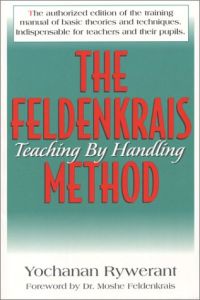
The Feldenkrais Method
Teaching by handling

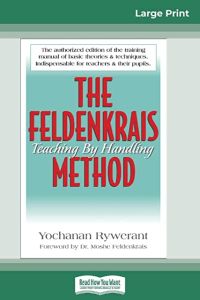
The Feldenkrais Method
Teaching by handling

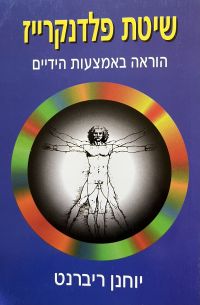
שיטת פלדנקייז
הוראה באמצעות הידיים


El metodo Feldenkrais

The book can be found at iBooks...
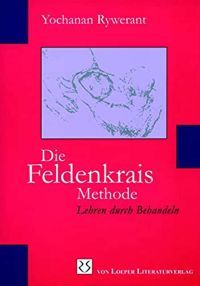
Die Feldenkrais Methode
Lehren durch Behandlen

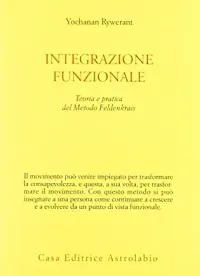
Integrazione Funzionale
Teoria e pratica
del Methode Feldenkrais
